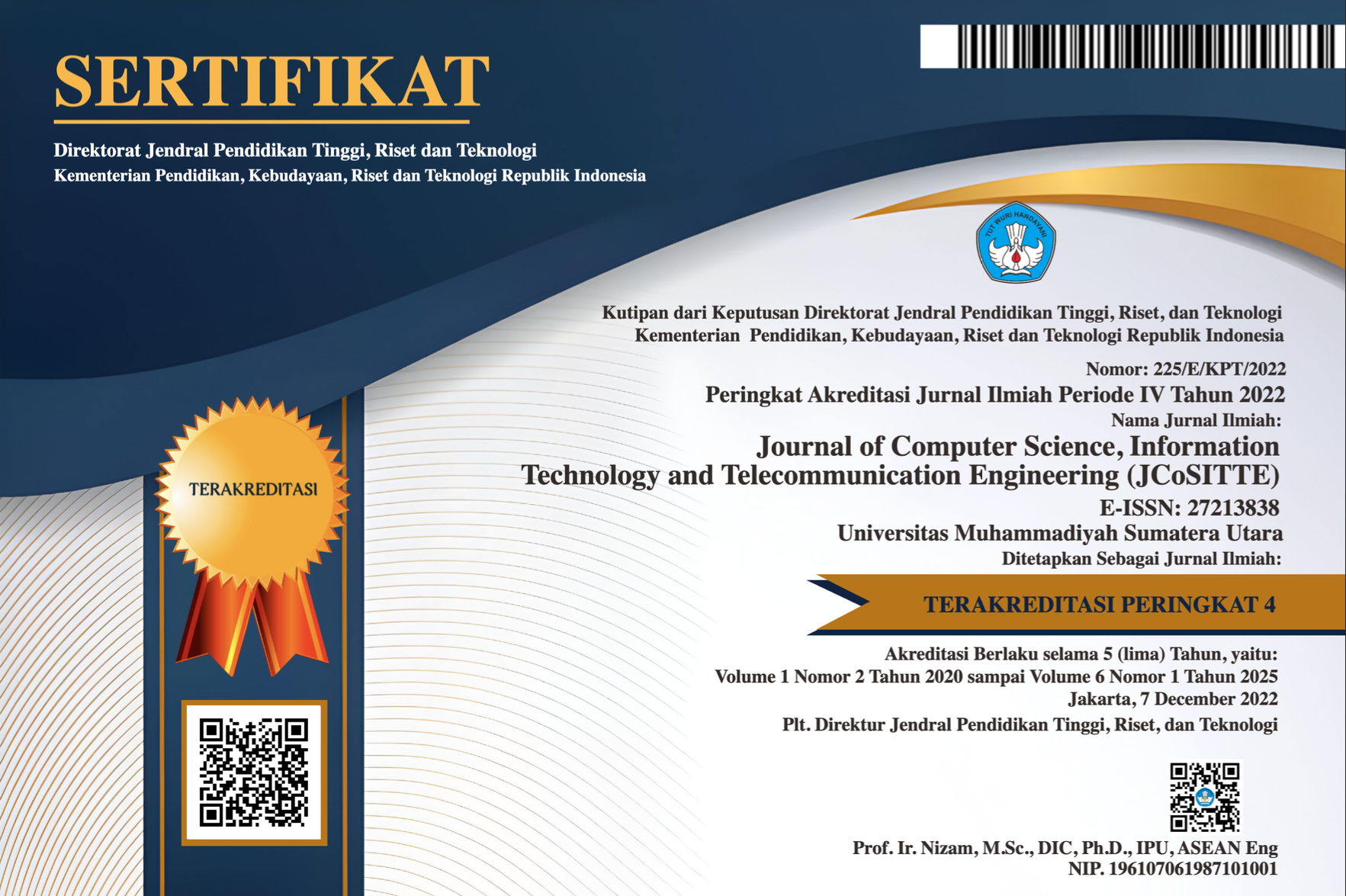Optimization Of A 20 Kv Capacitor Bank Energy Management System For Electrical Usage In Indihome Network Devices
Abstract
The increasing demand for stable and efficient electrical energy in telecommunication systems, particularly in IndiHome network infrastructure, requires a reliable energy management strategy. One of the key challenges faced is the presence of reactive power, which can reduce power factor efficiency and lead to higher energy losses. This study focuses on optimizing the energy management system using a 20 kV capacitor bank to improve power factor and reduce electrical losses in IndiHome network devices. The research involves the design, implementation, and analysis of a capacitor bank control system that responds dynamically to load variations. Through simulation and real-time testing, the system is evaluated based on its ability to maintain a high power factor, reduce energy consumption, and stabilize voltage levels. The results show that the optimized capacitor bank system can improve power factor to above 0.95 and reduce reactive power demand significantly, resulting in improved overall energy efficiency. This optimization not only reduces operational costs but also enhances the reliability and longevity of network equipment by minimizing voltage drops and harmonic disturbances. The study concludes that capacitor bank-based energy management systems are highly effective and essential for modern telecommunication infrastructure.
Keyword : Capacitor Bank, Power Factor, Energy Management, Telecommunication, IndiHome, 20 kV, and Reactive Power
Keywords
Full Text:
PDFReferences
Aryza, S et al (2024) A ROBUST OPTIMIZATION TO DYNAMIC SUPPLIER DECISIONS AND SUPPLY ALLOCATION PROBLEMS IN THE MULTI-RETAIL INDUSTRY. Eastern-European Journal of Enterprise Technologies, (3).
D. Sutanto, A. Z. R. Zahra, and B. Ismail, “Application of Smart Capacitor Banks in Power Distribution Systems for Power Factor Correction,” International Journal of Electrical and Computer Engineering (IJECE), vol. 10, no. 1, pp. 151–158, Feb. 2020.
Dalimunthe, M. E., & Lesmana, D. (2024). Analysis of Aquaponics Solar Panel Innovation in Building C of Pembangunan Panca Budi University. Fidelity: Jurnal Teknik Elektro, 6(1), 60-63.
ETAP Technical Manual. Operation Technology, Inc., 2022. [Online]. Available: https://etap.com
IEEE Std 1036-2010, IEEE Guide for Application of Shunt Power Capacitors, IEEE Power & Energy Society, 2010.
J. D. Glover, M. S. Sarma, and T. Overbye, Power System Analysis and Design, 6th ed., Cengage Learning, 2017.
M. H. Rashid, Power Electronics: Circuits, Devices and Applications, 4th ed., Pearson Education, 2013.
N. Kumar and M. R. Patel, “Design and Simulation of Automatic Power Factor Correction using Capacitor Bank for Industrial Loads,” International Journal of Engineering Research and General Science, vol. 3, no. 2, Mar.–Apr. 2015.
Pasaribu, Y. A. G., Aryza, S., & Dalimunthe, M. E. (2024). A Comparative Analysis Of Linear And Nonlinear Loads On The Performance Of Three-Phase Synchronous Generators. Jurnal Scientia, 13(03), 1175-1186.
Tharo, Z., Kusuma, B. S., Anisah, S., & Dhalimunte, M. E. (2021). ANALISIS PERBANDINGAN KINERJA KWH METER PRABAYAR DAN PASCABAYAR. Prosiding Konferensi Nasional Social & Engineering Polmed (KONSEP), 2(1), 358-365.
DOI: https://doi.org/10.30596/jcositte.v6i2.26390
Refbacks
- There are currently no refbacks.





.png)

